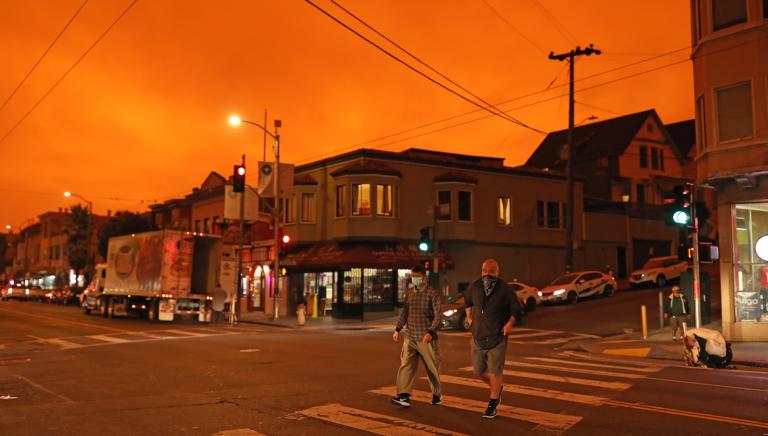 Get strong!Chris Mooney has an amusing reply to my piece on conservative white males (CWM) and the politics of climate. In that post, I note that CWM punch above their weight, as it were, because of their intensity and unity on the issue. I suggest that the appropriate response for climate hawks is to marshal even greater intensity and unity, in order to, you know, win. Mooney notes, however, that liberal psychology tends to be the inverse of CWM psychology, in ways that pose considerable political challenges:
Get strong!Chris Mooney has an amusing reply to my piece on conservative white males (CWM) and the politics of climate. In that post, I note that CWM punch above their weight, as it were, because of their intensity and unity on the issue. I suggest that the appropriate response for climate hawks is to marshal even greater intensity and unity, in order to, you know, win. Mooney notes, however, that liberal psychology tends to be the inverse of CWM psychology, in ways that pose considerable political challenges:
… for the most part liberals-slash-environmentalists are not going to be as opinion intense or as unified as conservatives. They are going to disagree and squabble more amongst themselves. They are going to focus not on being the same as one another and being unified, but on being different and unique — disunified, and disorganized. … Just look at the spats that erupt constantly on the center and left over climate policy, and how everybody is balkanized and in a completely different camp from those who are only half a political degree away from them on a 360 degree spectrum.
I admit, I got a chuckle out of this. Anyone who’s been involved in the online discussion of climate over the last decade knows exactly what he’s talking about. Who can forget those fevered months when the differences between cap-and-trade and cap-and-dividend seemed like the most important thing in the world? (Of course, carbon tax advocates know that both are utterly bankrupt and unacceptable. And the innovation folks know that all three are ridiculously misguided. Etc.)
I don’t know how seriously Mooney means us to take this as political analysis, but just for the record: I don’t think that the psychology of affluent, educated, mostly white liberal political junkies — and that’s the psychology Mooney’s really describing — is the primary barrier to political success on climate. It’s obviously quite salient to affluent, educated, white liberal political junkies like Mooney and me, and it’s easy to start projecting those intramural disputes onto the larger political landscape, but if you’re looking for explanations of climate’s political failure, I’d start elsewhere.
A big part of the problem is precisely that climate efforts so far have been almost entirely driven by liberal elites. It’s been an extremely intellectualized, top-down sort of undertaking, and as we saw with painful clarity during the climate bill fiasco, an elite-driven strategy isn’t going to cut it. Part of it is that, as Mooney points out, every online liberal fashions him or herself a precious snowflake. Everyone has their own perfect pony policy solution and disdains all others. A bigger part is simply that the elites devoted to the status quo have far more power, access, and money than elites devoted to change.
So what you need is a renewed left with genuine grassroots muscle, the ability to threaten politicians’ reelections, and lots of money to deploy. You need a left that is greater than the sum of its siloed constituent parts, so that climate is no longer the sole province of “the environmental movement,” gender equality no longer the sole province of “feminism,” worker welfare no longer the sole province of “labor,” etc. — some good old-fashioned solidarity.
The left used to have some of that. Why doesn’t it any more? Why does the left seem so much less than the sum of its parts these days? Obviously that’s a complicated question, but just to toss a few thoughts out:
People often seem to overemphasize arguments and ideas (as Mooney does) and underemphasize institutions, but if you ask me, the decline of the left’s power is closely connected to the decline of institutions that used to create leftists and give them a sense of common purpose. I’d put two in particular foremost among them: unions and liberal churches. It’s unions that brought people together — in the real world, not in chat rooms — and trained them to think and act as part of a political force devoted to the welfare of ordinary people against the iniquities of the rich and powerful. And it’s liberal churches that brought people together — in three-dimensional space, not on Twitter — to convince them that there is a genuine moral imperative to fight for the interests of the dispossessed and disadvantaged.
Both institutions are shadows of what they once were. And what has replaced them? What are the institutions that create and empower liberals? The only one left is academia, and that’s mostly for people like Mooney and me, not for working-class factory laborers, low-wage service employees, or marginalized populations.
In parallel with the decline of liberal institutions is the rise of neoliberalism, which emphasizes market mechanisms and post-tax wealth transfers but has very little to say about institutional power. (I’ll probably do a separate post on this soon.) Neoliberalism now completely dominates liberal elites, which puts them somewhat at odds with the left grassroots and the demographics for whom they’re allegedly advocating.
Anyway, again, as I said in my CWM post, it’s a mistake to abstract climate away from the larger political situation. Ultimately climate action is about overturning the status quo and defending the powerless (including future generations) against the depredations of the powerful. It’s a liberal undertaking. It relies on the strength of liberalism, in the U.S. and globally, which has proven itself frustratingly weak in recent years, particularly on economic issues (and climate is very much an economic issue). That weakness has many sources and many explanations, but I doubt the propensity of liberal climate policy wonks to squabble plays a leading role.




